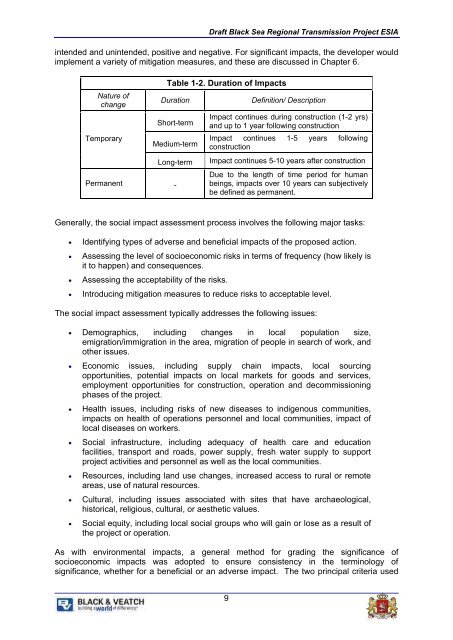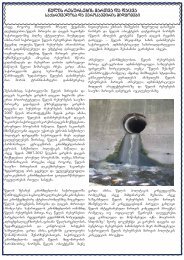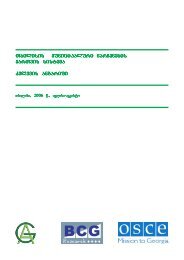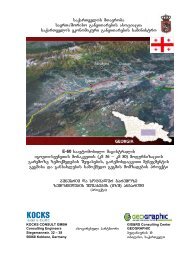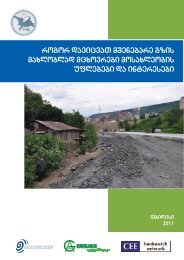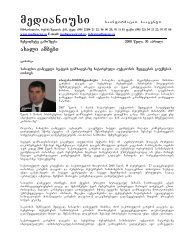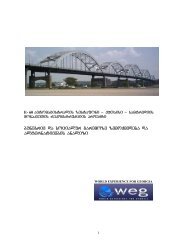Part I
Part I
Part I
Create successful ePaper yourself
Turn your PDF publications into a flip-book with our unique Google optimized e-Paper software.
Draft Black Sea Regional Transmission Project ESIA<br />
intended and unintended, positive and negative. For significant impacts, the developer would<br />
implement a variety of mitigation measures, and these are discussed in Chapter 6.<br />
Nature of<br />
change<br />
Temporary<br />
Table 1-2. Duration of Impacts<br />
Duration<br />
Short-term<br />
Medium-term<br />
Long-term<br />
Permanent -<br />
Definition/ Description<br />
Impact continues during construction (1-2 yrs)<br />
and up to 1 year following construction<br />
Impact continues 1-5 years following<br />
construction<br />
Impact continues 5-10 years after construction<br />
Due to the length of time period for human<br />
beings, impacts over 10 years can subjectively<br />
be defined as permanent.<br />
Generally, the social impact assessment process involves the following major tasks:<br />
<br />
<br />
<br />
<br />
Identifying types of adverse and beneficial impacts of the proposed action.<br />
Assessing the level of socioeconomic risks in terms of frequency (how likely is<br />
it to happen) and consequences.<br />
Assessing the acceptability of the risks.<br />
Introducing mitigation measures to reduce risks to acceptable level.<br />
The social impact assessment typically addresses the following issues:<br />
Demographics, including changes in local population size,<br />
emigration/immigration in the area, migration of people in search of work, and<br />
other issues.<br />
Economic issues, including supply chain impacts, local sourcing<br />
opportunities, potential impacts on local markets for goods and services,<br />
employment opportunities for construction, operation and decommissioning<br />
phases of the project.<br />
<br />
<br />
<br />
<br />
<br />
Health issues, including risks of new diseases to indigenous communities,<br />
impacts on health of operations personnel and local communities, impact of<br />
local diseases on workers.<br />
Social infrastructure, including adequacy of health care and education<br />
facilities, transport and roads, power supply, fresh water supply to support<br />
project activities and personnel as well as the local communities.<br />
Resources, including land use changes, increased access to rural or remote<br />
areas, use of natural resources.<br />
Cultural, including issues associated with sites that have archaeological,<br />
historical, religious, cultural, or aesthetic values.<br />
Social equity, including local social groups who will gain or lose as a result of<br />
the project or operation.<br />
As with environmental impacts, a general method for grading the significance of<br />
socioeconomic impacts was adopted to ensure consistency in the terminology of<br />
significance, whether for a beneficial or an adverse impact. The two principal criteria used<br />
9


